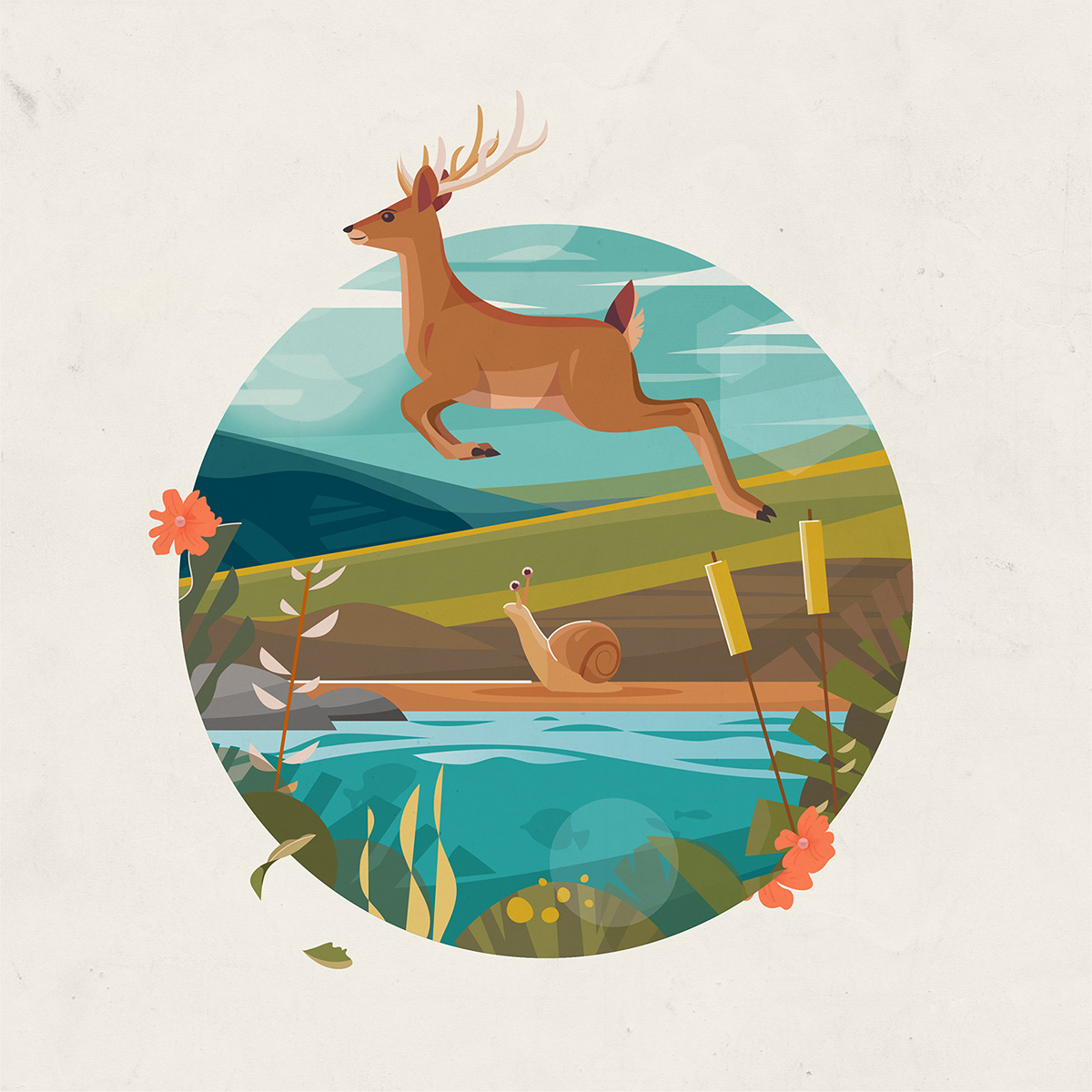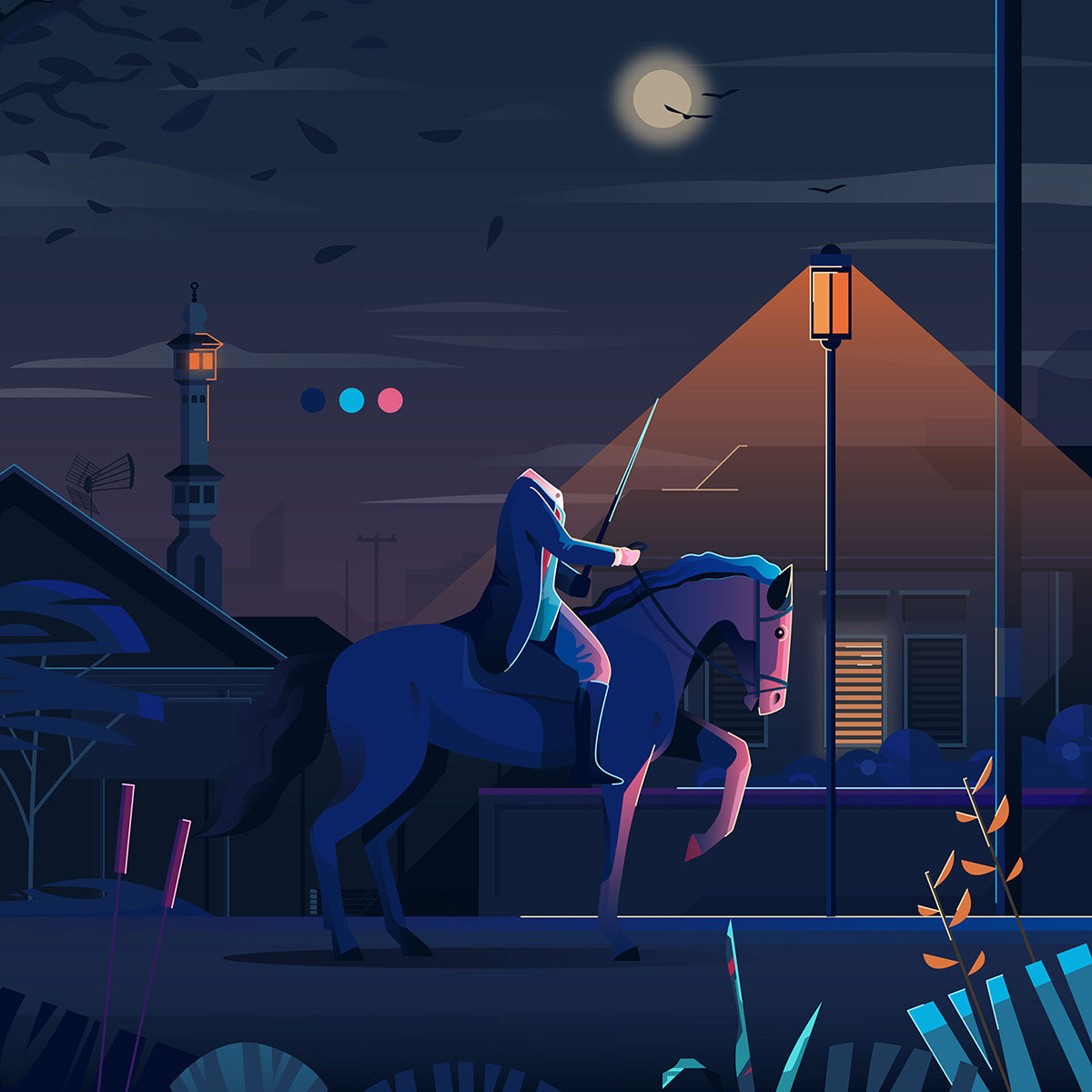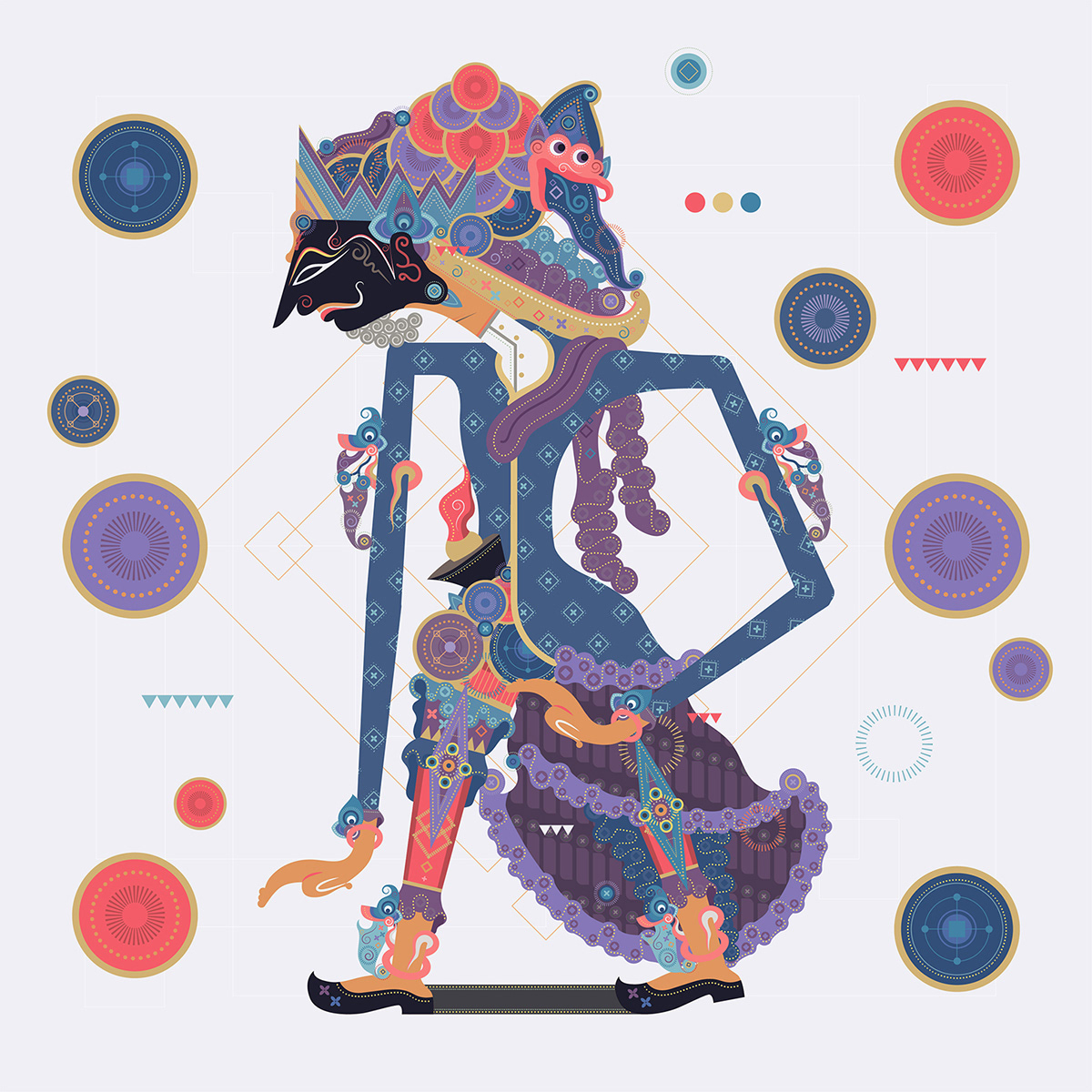A collection of artworks created by me inspired by the diversity of Indonesian cultures.

Nusantara is the Indonesian name of Maritime Southeast Asia (or parts of it). It is an Old Javanese term which literally means "outer islands". In Indonesia, it is generally taken to mean the Indonesian Archipelago.
The word Nusantara is taken from an oath by Gajah Mada in 1336, as written in the Old Javanese Pararaton and Nagarakretagama. Gajah Mada was a powerful military leader and prime minister of Majapahit credited with bringing the empire to its peak of glory. Gajah Mada delivered an oath called Sumpah Palapa, in which he vowed not to eat any food containing spices until he had conquered all of Nusantara under the glory of Majapahit.

Rusa dan si Kulomang
A folktale originated all the way from Aru Islands in the Maluku province of eastern Indonesia. It tells a story of a deer (rusa) who challenges a little snail named "Kulomang" in a running race. Known for being very slow, Kulomang thinks hard how he's able to win the competition. Guess who wins in the end?
A folktale originated all the way from Aru Islands in the Maluku province of eastern Indonesia. It tells a story of a deer (rusa) who challenges a little snail named "Kulomang" in a running race. Known for being very slow, Kulomang thinks hard how he's able to win the competition. Guess who wins in the end?

Jalan Tongkeng
It goes back to the Dutch colonialism era in Indonesia when there was this Dutch soldier who fell in love with a local Indonesian lady lived in Jalan Tongkeng, Bandung. But because the love was forbidden, he was killed by having his head chopped off from the body. Locals say that the ghost is still here strolling around the street appearing at night looking for his head somewhere while riding his horse.

Begawan Abiyasa
Also known as Vyasa (/ˈvjɑːsə/; Sanskrit: व्यास, literally "Compiler") ("Begawan" = gelar pendeta/pertapa according to KBBI), Begawan Abiyasa is generally considered as the author of the Mahabharata. In the Javanese version of Wayang, Abiyasa is known as one of the ancestors of the famous Pandawa (The Pandavas in Hindi) and was once the king of Astina under the name of Prabu Kresna Dwipayana.

Keys to the Kingdom
This illustration is created based on the imagery & philosophy of Gunungan, a mountain-like figure presents in the Indonesian version of wayang kulit. The theatrical performance of wayang kulit (shadow puppets) itself usually tells various stories, including the two famous folktales; the Ramayana and the Mahabharata.
If you take a look at a gunungan, you're going to find an entrance gate at the very center with two giant-like figures appear on the right and the left side. Those two figures are the twins Balaupata & Cingkarabala who play roles as the guards of the palace, while the head of Kala appearing a monstrous personification of time


